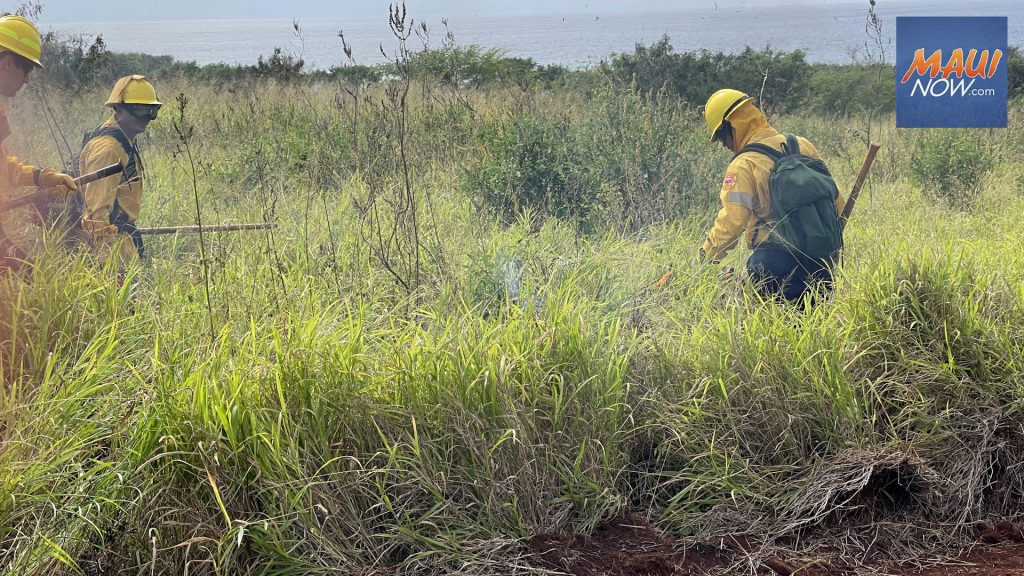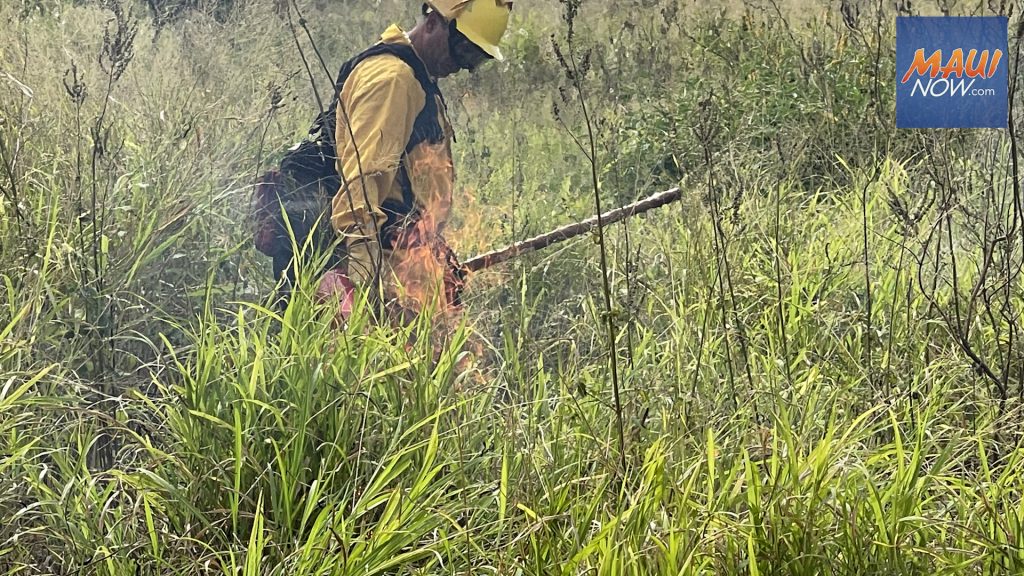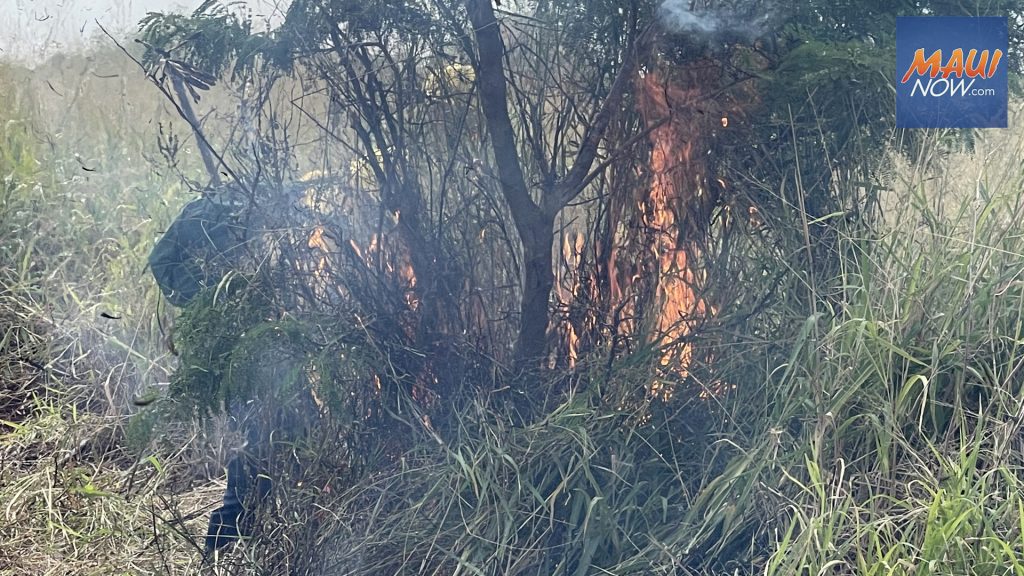Wildland firefighters complete ignition training
Two dozen federal, state, and county firefighters have completed what is known as ignition training.
“It will become another tool in the box for Hawai‘i wildland firefighters who anticipate more frequent and more ferocious fires due to the impacts of global climate change,” according to a Department of Land and Natural Resources news release.
Last week, experts from the US Forest Service wrapped up ignition training by conducting a field exercise on former agriculture lands in south Kaua‘i. Hundreds of acres here are covered in invasive grasses, the most common fuel for wildfire in Hawai‘i. Some 25% of the land across the state is covered by these grasses, adding to the overall potential for devastating wildfires.
Mike Walker, state protection forester with the DLNR Division of Forestry and Wildlife (DOFAW) said, “It’s called 219 Ignition training. We’re training our firefighters on proper ignition protocol and technique for fire suppression as well as prescribed fire.”
Prescribed fires are commonly started across the western US mainland and the military conducts these pre-planned fires often in Hawai‘i to reduce fuel loads and thus, the threat of uncontrolled fires.

“We, as DOFAW, don’t really do it that much. But it’s a tool in the toolbox that I’d like to see folks utilize more. Definitely the Department of Defense does it on their training areas, like Schofield Barracks West. They burn that a lot for UXO, unexploded ordnance. It is a tool that we really need to be able and capable to use,” Walker added.
Firefighters from numerous departments and agencies participated in last Thursday’s field exercise after having spent hours in the classroom learning how to conduct backburns for fire control or prescribed burns for pre-fire suppression.

Trainers say it comes down to preparation and planning with the key being safety for everyone involved. After an extensive briefing, firefighters split into three teams to practice setting up and lighting drip torches. These canisters contain a mixture of diesel fuel and gasoline and once lit, are used to light grasses or other vegetation.
For the exercise, three sections of grass-covered land were surrounded on all sides by firebreaks (graded dirt roads) to prevent flames from jumping from one spot to another. On training day, with rain overnight, high humidity, and wet grasses, the trainers were not sure they could get anything started.
While the green grass in the sectioned off areas was tough to ignite and did not burn fully, the experience was enough to give firefighters the practical knowledge they need to start backburns or prescribed burns, according to DLNR.

Walker said, “We want our firefighting force to know what to do and know what not to do. We can either burn the grass when we want it to burn, or we can wait until it gets ignited by somebody else and then have to go put it out. So, it’s something that’s really useful.”
While the demise of large-scale agriculture resulted in the invasion of non-native grasses, Walker says the plantations had a history of burning.
“I think culturally, Hawai‘i has changed a lot between the plantation days and the current population,” said Walker. “A lot of people who grew up during the plantation days were used to smoke and used to ash. The plantations really had a good grasp on it. They had the machinery, they had the people, and they had the water to use fire as a tool and keep it within it bounds. Every now and then it probably went out of prescription, but they were able to get a hold of it really quickly.”
In order to use prescribed burning as a fire prevention tool, fire agencies have to get a permit from the Department of Health Clean Air Branch. Agencies need to produce a formal burn plan and be familiar with the area to be burned, the fuel types, and weather conditions. This planning is critical, Walker said, to prevent a prescribed fire from becoming an out-of-control wildfire.
In New Mexico three years ago, a prescribed fire went “out of prescription” and charred more than 530 square miles of land and destroyed homes east of Santa Fe. The Forest Service ceased all prescribed burning operations for 90 days to conduct a review of its procedures and policies and concluded managers can’t rely on past success and must continuously learn and adapt to changing conditions.
Walker concluded, “That’s really a crucial element to working with fire. You have to have all your ducks in a row. We want to make sure that we’re operating within a really tight constraint and in weather conditions so that a prescribed fire doesn’t get out of control.”



















